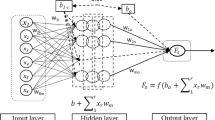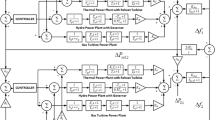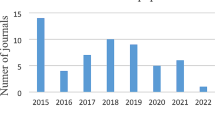Abstract
In the current investigation, the authors propose an intelligent real-time system to dynamically simulate the catalyst temperature in automotive engines over the coldstart period. In general, the behavior of an engine during the first few minutes of its operation, namely the coldstart period, is highly transient and nonlinear. However, it is important to the engineers of automotive industry to develop advanced simulation techniques capable of capturing the engine system’s behavior during coldstart periods. The main motivation behind such a fact emanates in the pursuit of making successful strides towards decreasing the amount of unburned hydrocarbon emissions (HCs) of the engine. Catalytic convertors play a pivotal role in reducing the amount of this emitted pollutant. Therefore, here, the authors develop a knowledge based intelligent identification system, based on the integration of a low-level fuzzy identification machine (FIM) identifier and a hyper-level multiobjective optimizer, to monitor the catalyst temperature over the coldstart period for a given automotive engine system. In the current investigation, the authors propose the use of synchronous self-learning Pareto strategy for the multi-objective optimization of the architecture of FIM. To suit the intelligent scheme for online applications, the authors capture the required database using the concept of nonlinear auto-regressive exogenous systems. The developed intelligent approach can be used as a real-time soft sensor to observe the state of the catalytic convertor and send the required data to the coldstart controller. To ensure the efficacy of the resulting time delay FIM framework, it is used for capturing the catalyst temperature in three different experimental conditions. Through a comparative numerical study, it is demonstrated that the proposed soft sensor can be efficiently used for real-time estimations of the catalyst temperature. Besides, the results let us make sure that intelligent approaches have an aptitude to be effectively used as real-time observers instead of expensive commercial sensors. Generally, the results of the current investigation substantiates the authenticity of advanced computational approaches for coping with the considered identification problem, to help resolving one of the challenging issues in the field of automotive engineering, that is, the coldstart HC emission reduction.
















Similar content being viewed by others
References
Sanketi PR (2009) Coldstart modeling and optimal control design for automotive SI engines. Ph.D. Thesis, University of California, Berkeley
Zavala JC (2007) Engine modeling and control for minimization of hydrocarbon coldstart emissions in SI engine. Ph.D. Thesis, University of California, Berkeley
Azad NL, Sanketi PR, Hedrick JK (2012) Determining model accuracy requirements for automotive engine coldstart hydrocarbon emissions control. ASME J Dyn Syst Meas Control 134(5):051002
Sanketi PR, Zavala JC, Wilcutts M, Kaga T, Hedrick JK (2007) MIMO control for automotive coldstart. In Fifth IFAC symposium on advances in automotive control, August
Azad NL, Sanketi PR, Hedrick JK (2012) Sliding mode control with bounded inputs and its application to automotive coldstart emissions reduction. Invited session on advanced control of spark ignited engines, (2012) American Control Conference, Montreal
Mozaffari A, Azad NL (2014) Optimally pruned extreme learning machine with ensemble of regularization techniques and negative correlation penalty applied to automotive engine coldstart hydrocarbon emission identification. Neurocomputing 131:143–156
Mozaffari A, Azad NL (2014) Coupling gaussian generalized regression neural network and mutable smart bee algorithm to analyze the characteristics of automotive engine coldstart hydrocarbon emission. J Exp Theor Artif Intell. doi:10.1080/0952813X.2014.924588
Ishibuchi H, Nojima Y (2007) Analysis of interpretability-accuracy tradeoff of fuzzy systems by multiobjective fuzzy genetics-based machine learning. Int J Approx Reason 44(1):4–31
Mozaffari A, Behzadipour S, Kohani M (2014) Identifying the tool-tissue force in robotic laparoscopic surgery using neuro-evolutionary fuzzy systems and a synchronous self-learning hyper level supervisor. Appl Soft Comput 14:12–30
Zavala JC, Sanketi PR, Wilcutts M, Kaga T, Hedrick JK (2007) Simplified models of engine HC emissions, exhaust temperature and catalyst temperature for automotive coldstart. In Fifth IFAC symposium on advances in automotive control, August
Pedrycz W (1995) Fuzzy sets engineering. CRC Press, Boca Raton
Loghmanian SMR, Jamaluddin H, Ahmad R, Yusof R, Khalid M (2012) Structure optimization of neural network for dynamic system modeling using multi-objective genetic algorithm. Neural Comput Appl 21:1281–1295
Fernández A, Herrera F (2012) Linguistic fuzzy rules in data mining: follow-up Mamdani fuzzy modeling principle. In: Trillas E, Bonissone PP, Magdalena L, Kacprycz J (eds) Combining experimentation and theory. A hommage to Abe Mamdani. Springer, New York
Cordon O (2011) A historical review of evolutionary learning methods for Mamdani-type fuzzy rule-based systems: designing interpretable genetic fuzzy systems. Int J Approx Reason 52:894–913
Ishibuchi H, Nakashima Y, Nojima Y (2011) Performance evaluation of evolutionary multiobjective optimization algorithms for multiobjective fuzzy genetics-based machine learning. Soft Comput 15:2415–2434
Mozaffari A, Fathi A, Azad NL (2014) Preferred design of recurrent neural network architecture using a multiobjective evolutionary algorithm with un-supervised information recruitment: a paradigm for modeling shape memory alloy actuators. Meccanica 49(6):1297–1326
Mozaffari A, Gorji-Bandpy M, Samadian P, Mohammadrezaei S (2012) Analyzing, controlling, and optimizing Damavand power plant operating parameters using a synchronous parallel shuffling self-organized Pareto strategy and neural network: a survey. Proc IMechE Part A: J Power Energy 226(7):848–866
Deb K (2001) Multi-objective optimization using evolutionary algorithms. Wiley, Hoboken
Goldberg DE (1989) Genetic algorithms in search, optimization, and machine learning. Machine learning, Reading
Gong M, Liu C, Jiao L, Cheng G (2010) Hybrid immune algorithm with Lamarckian local search for multi-objective optimization. Memet Comput 2:47–67
Khare V (2002) Performance scaling of multi-objective evolutionary algorithm. MSc Thesis in Natural Computation, University of Birmingham, Edgboston
Chuang LY, Hsiao CJ, Yang CH (2011) Chaotic particle swarm optimization for data clustering. Expert Syst Appl 38:14555–14563
Author information
Authors and Affiliations
Corresponding author
Rights and permissions
About this article
Cite this article
Mozaffari, A., Azad, N.L. A robust time delay auto-regressive exogenous fuzzy inference system for real-time estimation of catalyst temperature over engines coldstart operation: a multiobjective implementation scenario. Int. J. Dynam. Control 4, 134–153 (2016). https://doi.org/10.1007/s40435-014-0133-2
Received:
Revised:
Accepted:
Published:
Issue Date:
DOI: https://doi.org/10.1007/s40435-014-0133-2




